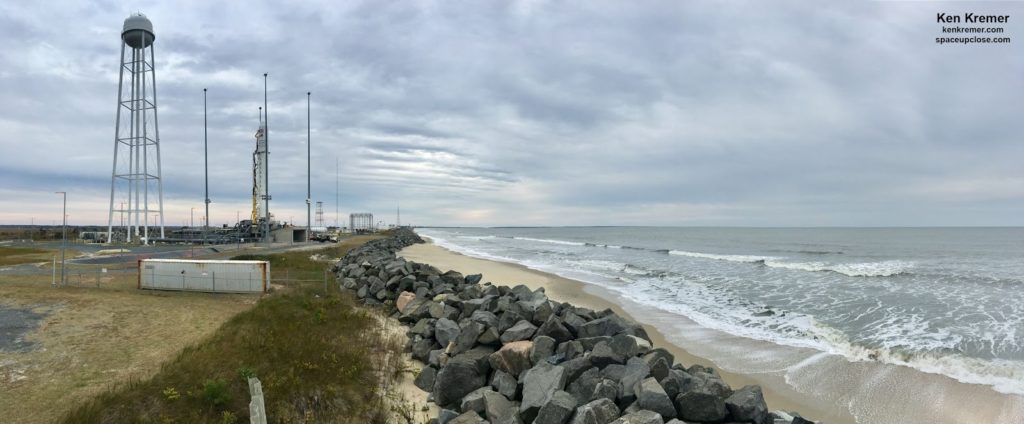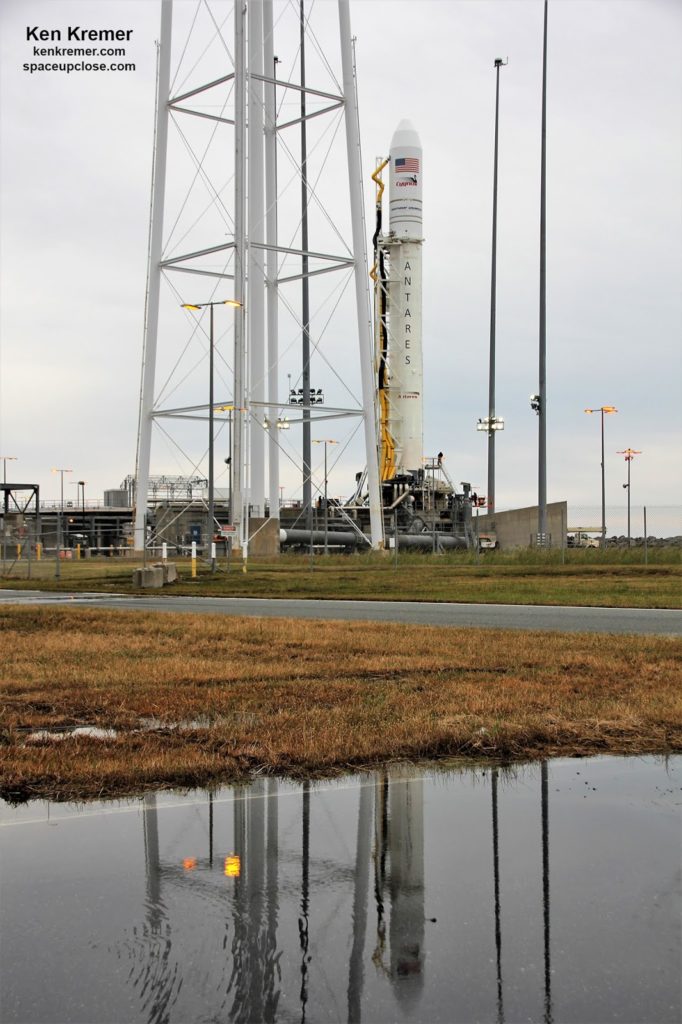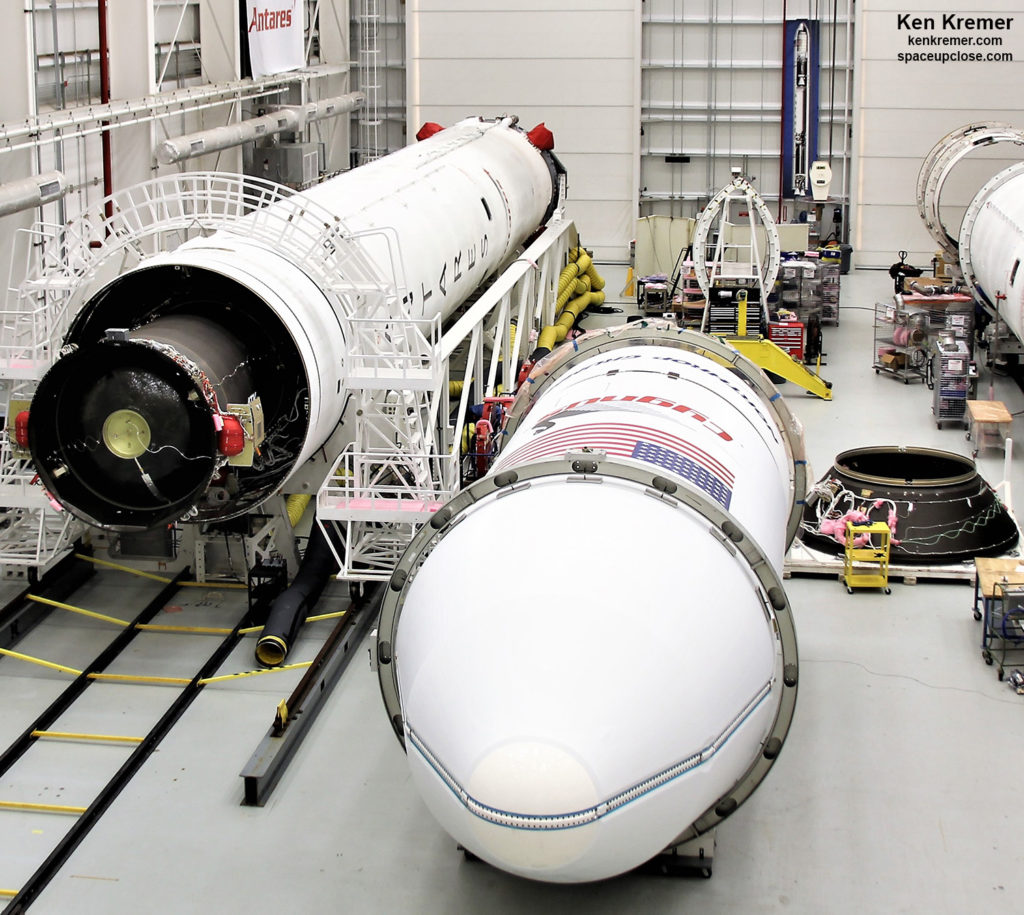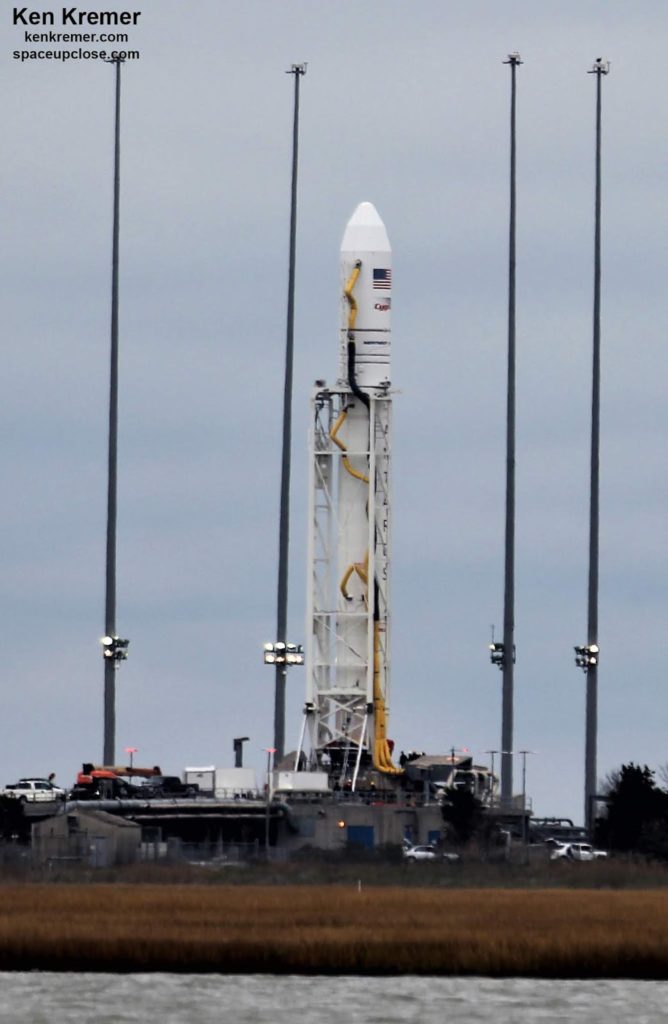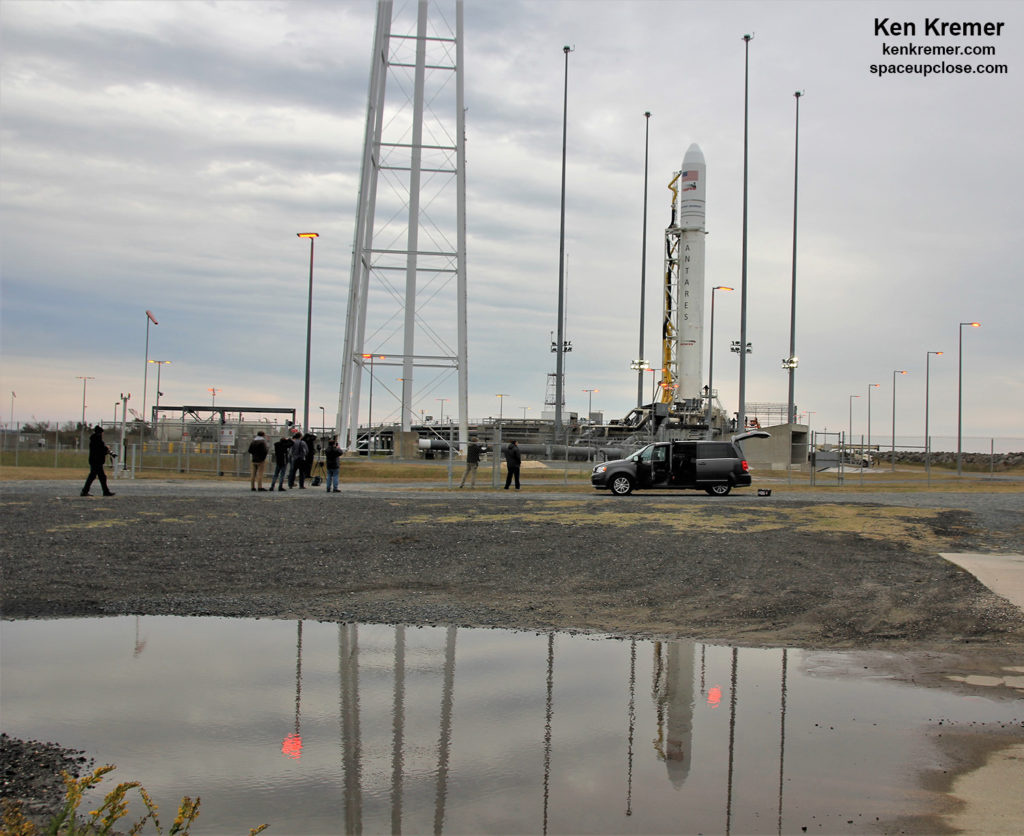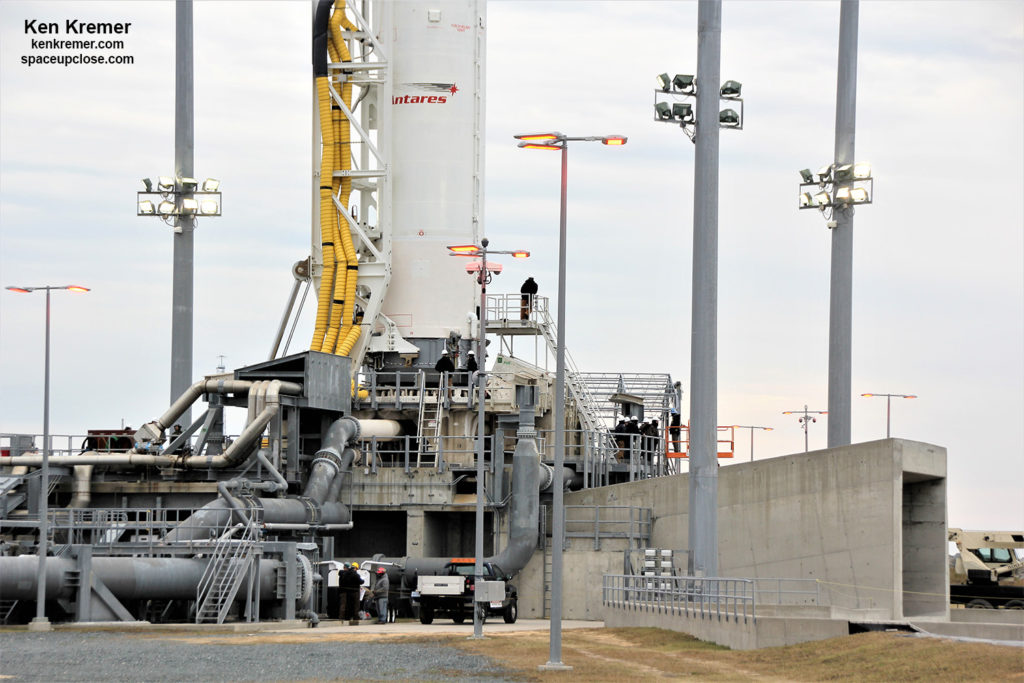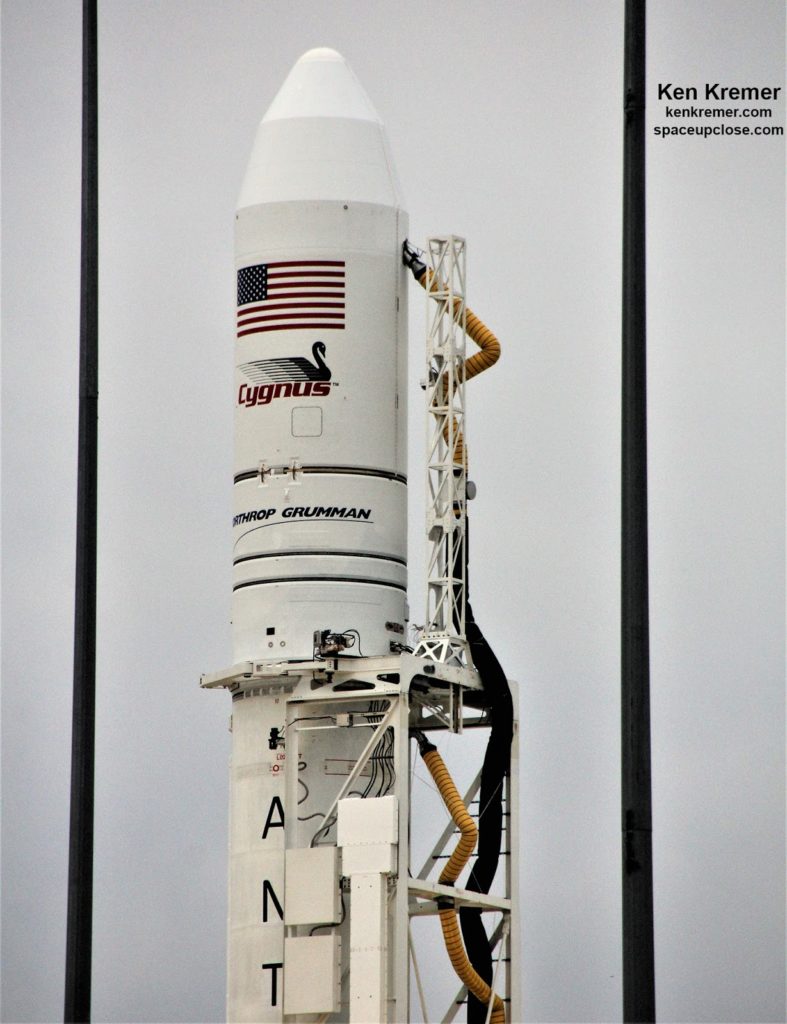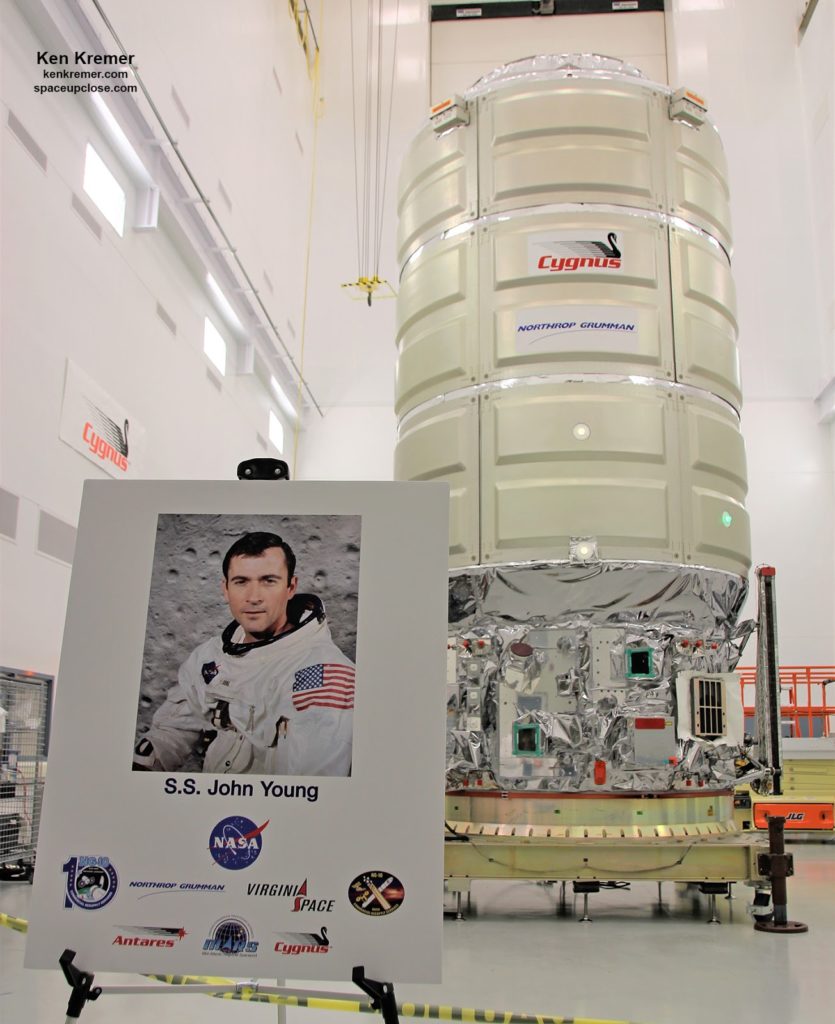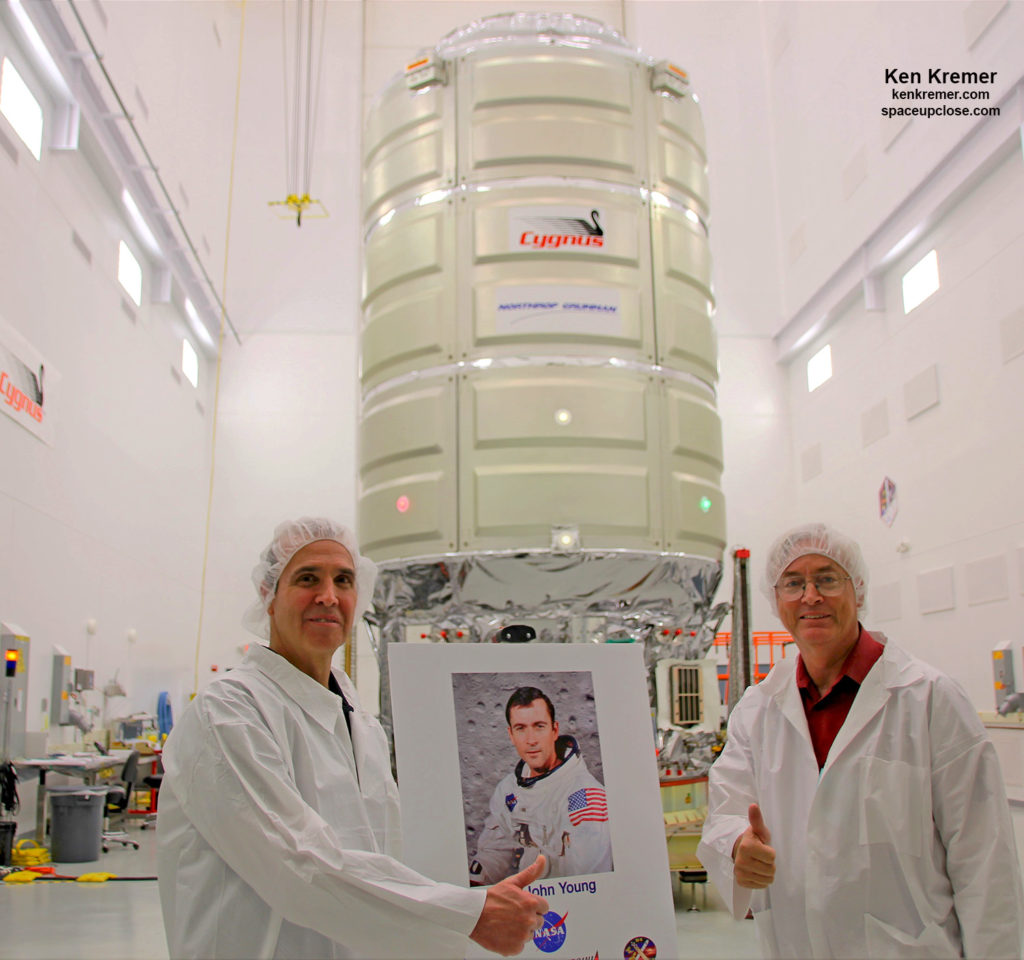November 2018
NASA
WALLOPS FLIGHT FACILITY, VA – Nasty weather prospects have nixed the scheduled Thursday,
Nov. 15 launch of the Northrop Grumman Antares rocket with the Cygnus NG-10
cargo ship aboard bound for the International Space Station (ISS) – forcing NASA
and company officials to attempt liftoff No
Earlier Than NET Friday, Nov. 16 at NASA’s Wallops Flight Facility on Virginia’s
Eastern Shore. And it could easily delay further given the horrible weather situation.
“The launch of Northrop Grumman’s Antares rocket with the Cygnus
cargo spacecraft has been postponed due to the poor weather forecast for the
original launch window on Nov. 15,” Joel Montalbano, ISS Program deputy manager
at NASA’s Johnson Space Center, announced at today’s (Nov. 14) prelaunch briefing
at NASA Wallops.
“The revised launch window now opens at 4:23 a.m. EST on Nov. 16
from Pad 0A of Virginia Space’s Mid-Atlantic Regional Spaceport, located
at NASA’s Wallops Flight Facility on Virginia’s Eastern Shore.”
With
chances for Thursdays launch plunging to less than 10% favorable, the NASA-contractor
team opted to preemptively postpone Antares launch by at least 24 hours to Friday.
This saves
the team the tremendous time, effort and cost of preparing and fueling the
rocket for naught, so that the team will be well rested for whenever the
weather improves sufficiently.
outlook for Friday is also poor – rising only somewhat to 45% favorable as heavy
rains and strong winds sweep through Wallops.
been miserable all week on the US East coast and weather prospects deteriorated
all week, so the launch postponement is not at all surprising.
of a launch, Northrop Grumman workers rolled Antares to the launch pad late Monday
night, approximately 1 mile (1.6 km) from the Horizontal Integration Facility
(HIF) to pad 0A at Wallops.
was completed in a driving rain storm,” said Frank DeMauro, Northrop Grumman VP
for Human Spaceflight at today’s prelaunch briefing.
foot (42.5 m) long Antares rocket was raised erected at pad OA by around 5 a.m. EST.
assessed weather conditions at 90-percent unfavorable for a launch, with the
main concerns being thick clouds, disturbed weather and low cloud ceilings.
Heavy rainfall (1-2 inches) and high wind gusts (45-50 mph) are expected,” NASA
added in a statement.
morning, but strong northwesterly winds are still expected to affect the
Eastern Shore during Friday’s backup count and launch window. Winds are
expected to be sustained at 25-30 mph with gusts up to 35 mph. Sea states will
also be of concern with the prolonged high wind event: Seas are expected to be
8-12 feet during Friday morning’s count and slightly falling off to 8-10 feet
during the launch window.”
Weather prospect improves dramatically by the
weekend as chances on Saturday rise to about 95% favorable and 90% on Sunday.
However the approaching storm may also impact the
Bermuda Tracking Station with heavy rains and winds and negatively impact its
ability to track the launch- thus forcing another preemptive postponement.
“Conditions look to become quite favorable for
a launch Saturday morning with high pressure building into the southeastern
U.S. and the Eastern Shore, providing lighter winds and mostly clear to clear
skies. One caveat to Saturday however, is that the system expected to impact
the Wallops region Thursday will drag a strong front across Bermuda on Friday
into early Saturday, providing potentially heavy rainfall and strong winds
there prior to the launch window. At this time, conditions do look to improve
enough in Bermuda prior to the expected T-0 Saturday morning with winds diminishing and
light rainfall lingering,” said NASA.
“Weather in Bermuda is a factor because NASA’s Bermuda Tracking Station supports
tracking, telemetry, command and control of launches from both Wallops and
Florida.”
Thus Sunday might be the best chance for a
launch- but its still TBD at this time.
The
rocket is ready to launch when the weather cooperates.
“The
combined systems test of the rocket, payload, and range was completed, said Kurt
Eberly, Antares program manager VP at Northrop Grumman.
The countdown
starts at T Minus 6 hours 15 minutes before liftoff. Fueling begins at T Minus 1.6 hours.
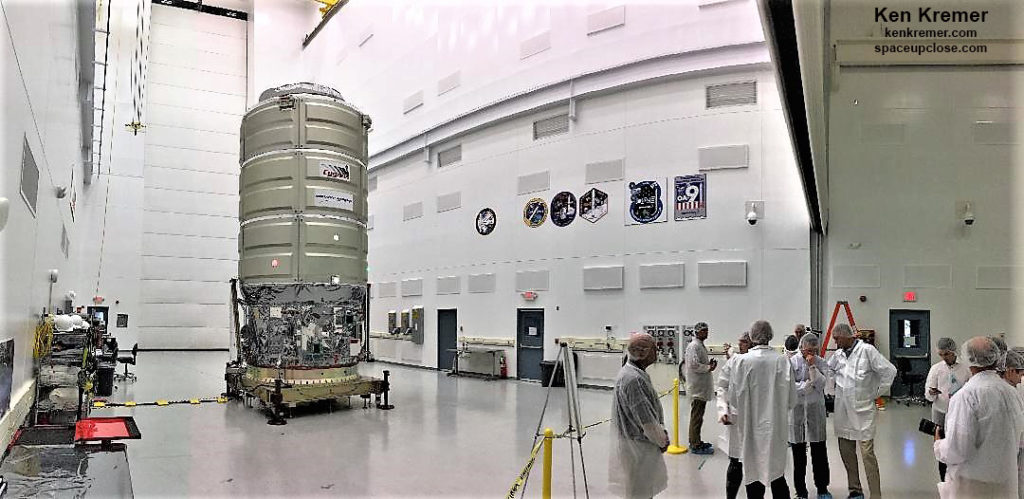 |
|
Wide view of Cygnus spaceship for NG-10 resupply flight during media day inside Northrop
Grumman cleanroom processing facility at NASA’s Wallops Flight Facility, VA. Named in honor of Apollo 16 moonwalker John Young by former astronaut Rick Mastracchio. Cygnus slated for launch with 3.7 tons cargo to ISS for NASA on Nov. 15, 2018 atop Antares rocket. Credit: Ken Kremer/kenkremer.com/SpaceUpClose.com |
Whenever Cygnus does fly this will be NASA’s 5
cargo resupply mission of 2018 and 1 more is also planned by SpaceX on NET Dec.
4, said Montelbano.
Cygnus NG-10 will remain at the station for
approximately 3 months. 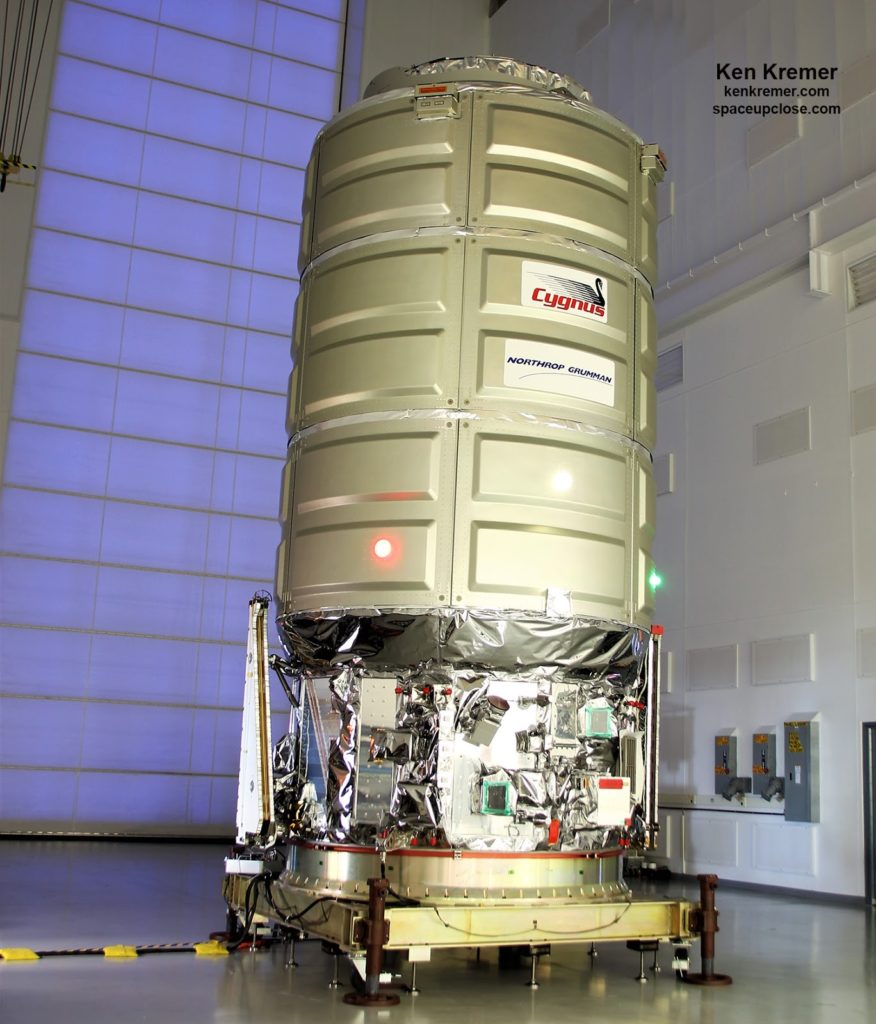
The Cygnus NG-10 cargo freighter, built by Northrop Grumman
Corporation, was christened the ‘S.S. John Young’ – in memory of John Young who
was NASA’s longest serving astronaut and passed away earlier this year in
January at age 87.
deliver nearly 4 tons of research experiments and station hardware and crew
supplies to the trio of astronauts and cosmonauts living aboard the orbiting
science outpost after blastoff atop the 2 stage Antares 230 version rocket.
resupply cargo mission for NASA.
recycler and refabricator to aid NASA’s Deep Space
exploration efforts.
into high-quality 3D-printer filament to create tools and materials, a key
capability for future long-duration space missions beyond low-Earth orbit,”
according to NASA.
Cygnus will be loaded with cargo up to 3,350 kg (7,385 lb.)
comprising science experiments, research gear,
food, water, spare parts, crew supplies and vehicle hardware to support the Expedition 57 and 58 crews.
Cygnus will deliver
vital equipment, supplies and scientific equipment to the space station as part
of Northrop Grumman’s Commercial Resupply Services-1 (CRS-1) contract with NASA
– totaling 11 cargo flights.
“NG-10 is the next to
last followed by NG-11 next spring under the CRS-1 contract,” said Eberly.
“Northrop Grumman also
has been awarded the follow-on CRS-2 contract from NASA comprising at least 6
more cargo missions.”
To date, Cygnus
spacecraft have delivered more than 23,000 kilograms of cargo to the
International Space Station, and removed 17,000 kilograms of disposable
cargo.
The
prior Cygnus cargo freighter was successfully launched by an Antares 230
vehicle from Wallops on May 21, 2018 on the Orbital ATK OA-9 resupply mission
for NASA before the company merged with Northrop Grumman.
continuing onsite coverage of NASA, SpaceX, ULA, Boeing, Lockheed Martin,
Orbital ATK and more space and mission reports direct from the Kennedy Space Center,
Cape Canaveral Air Force Station, Florida and Wallops Flight Facility,
Virginia.
and human spaceflight news: www.kenkremer.com –www.spaceupclose.com –
twitter @ken_kremer – email: ken at kenkremer.com
scientist and journalist based in the KSC area.
Ken’s photos are for sale and he is available for lectures and outreach events


